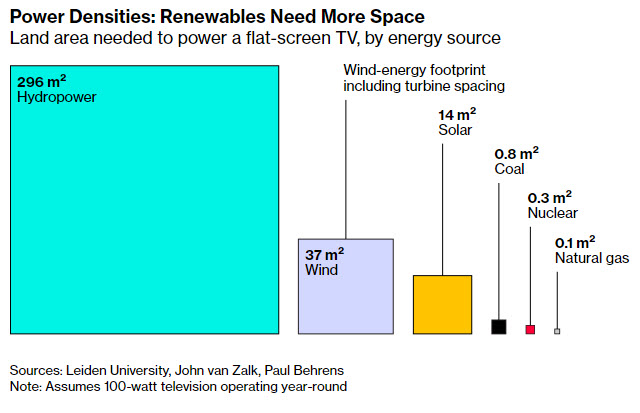
Energy News Beat Publishers Note: (ENB): While being good stewards of the earth’s resources is a great thing. We need to look at the cost of kWh and the kWh per Acer numbers. People on fixed or low income will be hit extremely hard with the increase in electrical power. Let’s not forget that the national electrical grid cannot support the additional solar and wind being implemented. Let’s look at the raw materials required for an additional plethora of solar panels and wind farm components. Nuclear and carbon capture of natural gas seems to be the two biggest issues not being discussed.
What about the migrating birds that will be killed with the additional 250M acres of wind farms, or the 15M acres of offshore installations? Wildlife and the disproportionally impacted communities seem like they are always left out of the planning meetings. – Just say’n
At his international climate summit last week, President Joe Biden vowed to cut U.S. greenhouse gas emissions in half by 2030. The goal will require sweeping changes in the power generation, transportation and manufacturing sectors. It will also require a tremendous amount of land.
Wind farms, solar installations and other forms of clean power take up far more space on a per-watt basis than their fossil-fuel-burning brethren. A 200-megawatt wind farm, for instance, might require spreading turbines over 19 square miles (49 square kilometres). A natural-gas power plant with that same generating capacity could fit onto a single city block.
Achieving Biden’s goal will require aggressively building more wind and solar farms, in many cases combined with giant batteries. To fulfill his vision of an emission-free grid by 2035, the U.S. needs to increase its carbon-free capacity by at least 150%. Expanding wind and solar by 10% annually until 2030 would require a chunk of land equal to the state of South Dakota, according to Bloomberg and Princeton University estimates. By 2050, when Biden wants the entire economy to be carbon free, the U.S. will need up to four additional South Dakotas to develop enough clean power to run all the electric vehicles, factories and more.

To be clear, Biden’s plan doesn’t need to entirely rest on wind and solar. Nuclear energy, which requires far less space, is also emission-free. Same for hydroelectric power. Plus, wind farms can be installed at sea. Solar panels work wonderfully on rooftops. And plenty of companies are placing bets that fossil-fuel plants can be retrofitted to burn hydrogen or equipped with systems to capture their carbon dioxide emissions.
But no matter how you slice it, the U.S. will need to dedicate more land to producing power in an emissions-free future. Here’s how researchers at Princeton University’s Net-Zero America project estimate it can be done.
for the rest of the story: Bloomberg Green



